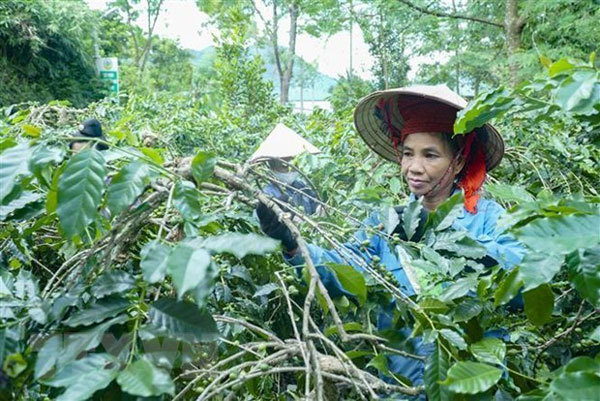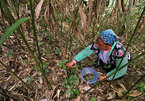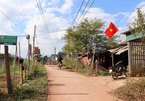 |
| A farmer takes care of her coffee trees. (Photo: VNA) |
The Vietnamese Government has issued a decree on new multidimensional poverty standards for the 2021-2025 period, which raises the income-based poverty threshold in both rural and urban areas.
The national multidimensional poverty indexes, which measure the ratio of the population on low incomes and with little access to basic social services, serve as the basis for policy-making in poverty reduction, social welfare, and other matters.
Under Decree No 07/2021/ND-CP, for this year alone, the multidimensional poverty measurement stipulated in Decision No 59/2015/QD-TTg for the 2016-2020 period will continue to be applied.
From next year to 2025, the income-based poverty threshold for poor households will be raised from 700,000 VND per person per month in rural areas, applicable in the 2016-2020 period, to 1.5 million VND per person per month.
In urban areas, it will be 2 million VND per person per month, compared with 900,000 VND in the previous term.
Besides income levels, multidimensional poverty will be measured by the access to six essential social services (or six dimensions) - employment, healthcare, education, housing, water and sanitation, and information access - instead of only five in the previous period.
The six dimensions will be presented by 12 indicators, up from 10.
From 2022, poor households in rural areas are those that either have a monthly per capita income equal to or less than 1.5 million VND or lack three indicators. In urban areas, poor households are those that either have monthly per capita income equal to or less than 2 million VND or lack three indicators.
The decree will take effect from March 15.
The national poverty rate is estimated to have been around 5.23 percent in the 2016-2020 period and the near-poverty rate 4.59 percent.
The northwestern mountainous region has the highest poverty rate, at 4.63-times the national rate. It is followed by the northeastern mountainous region and the Central Highlands.
The southern region has the lowest poverty rate, at less than 1 percent. VNA

Vietnam achieves poverty reduction goals
Vietnam has gained impressive achievements in poverty reduction in recent years under the leadership of the Party and the Government, but more will be done to ensure these efforts leave sustainable impacts.

Vietnam sets an example in poverty reduction
Vietnam is expected to lower its national average poverty rate from 58.1 per cent in 1993 to 2.75 percent by the end of 2020, becoming a role model in the world in poverty reduction and hunger elimination, said Prime Minister Nguyen Xuan Phuc.